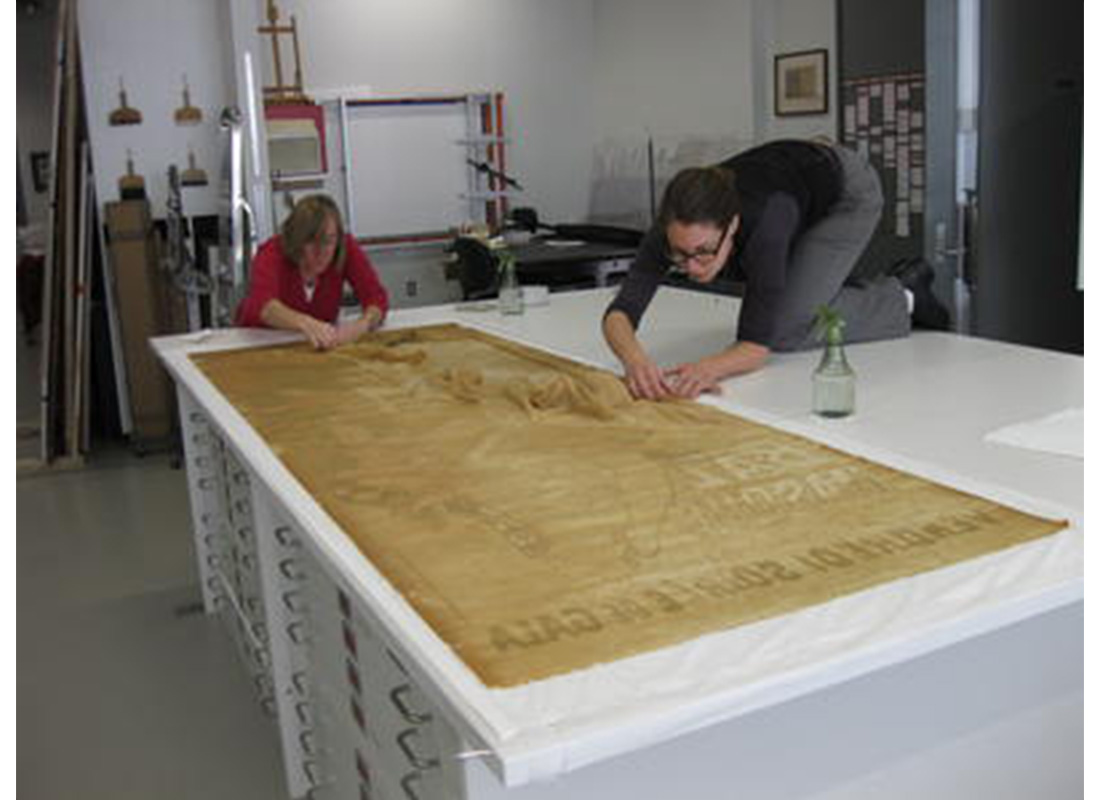
Behind the Scenes with Debussy's Paris, Part II: Conservation
David Dempsey, Associate Director for Museum Services, describes the process of conserving several of our nineteenth century French posters for the exhibition Debussy's Paris: Art, Music and Sounds of the City.
The Debussy's Paris exhibition was a great opportunity to have several nineteenth century posters conserved. The posters were never meant to last very long, so they were printed on poor quality paper that is full of impurities and turned acidic and weakened over time. In the past they had been glued onto a thin linen cloth to give them some strength and to protect them. They had never been framed and were generally stored rolled up and then unfurled for classes and exhibition. This had caused a lot of wear and tear over the years.
We asked Leslie Paisley of the Willliamstown Art Conservation Center to work on conserving them and mounting them in a more formal manner. Leslie and her team began by checking to see if the inks were water soluble, which they were to some extent, so that limited our options. But by working from the back of the linen they were able to soften the glue enough to gently pull the linen off the back. Once it was completely removed they used wheat starch paste as a “poultice” (a thick gel that wet the remaining glue without causing the inks to run) to soften the remaining glue so that it could be carefully removed from the back of the posters.
The linen was replaced with Japanese tissue paper, which is very light and strong. Paste was applied to the back of the poster and the tissues placed on the back and pressed to make sure they adhered. Then the posters were mounted on larger temporary panels by stretching the Japanese tissue around the edges of the panels. They were then left to dry for two months to make sure the posters had a chance to relax and adjust to their new mounts. After drying they were transferred to custom built panels that are acid-free and very resistant to warping. New metal frames were ordered and the completed pieces are now a focal point of the exhibition.
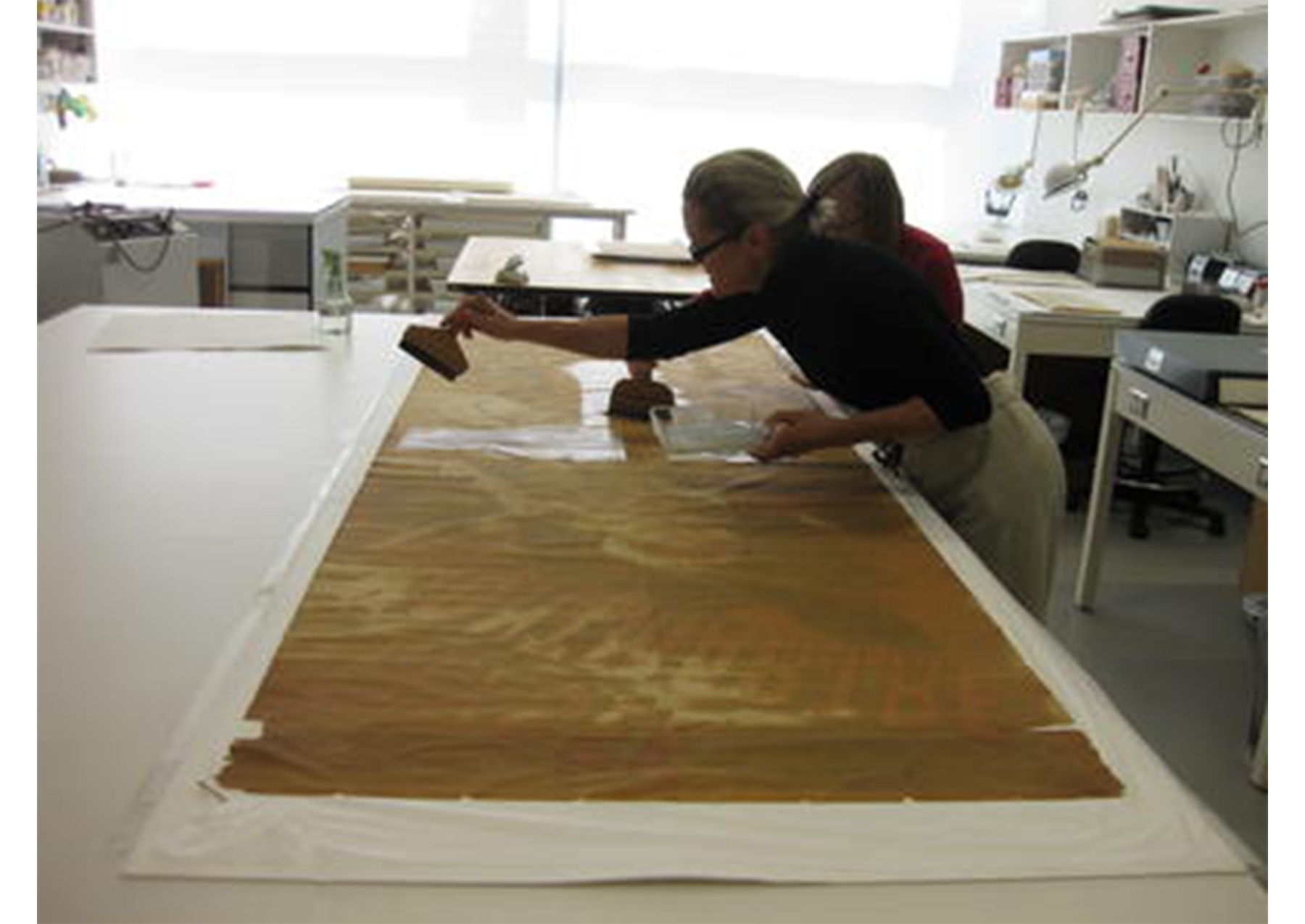
Leslie Paisley, Rebecca Johnston Applying wheat starch paste in preparation for relining
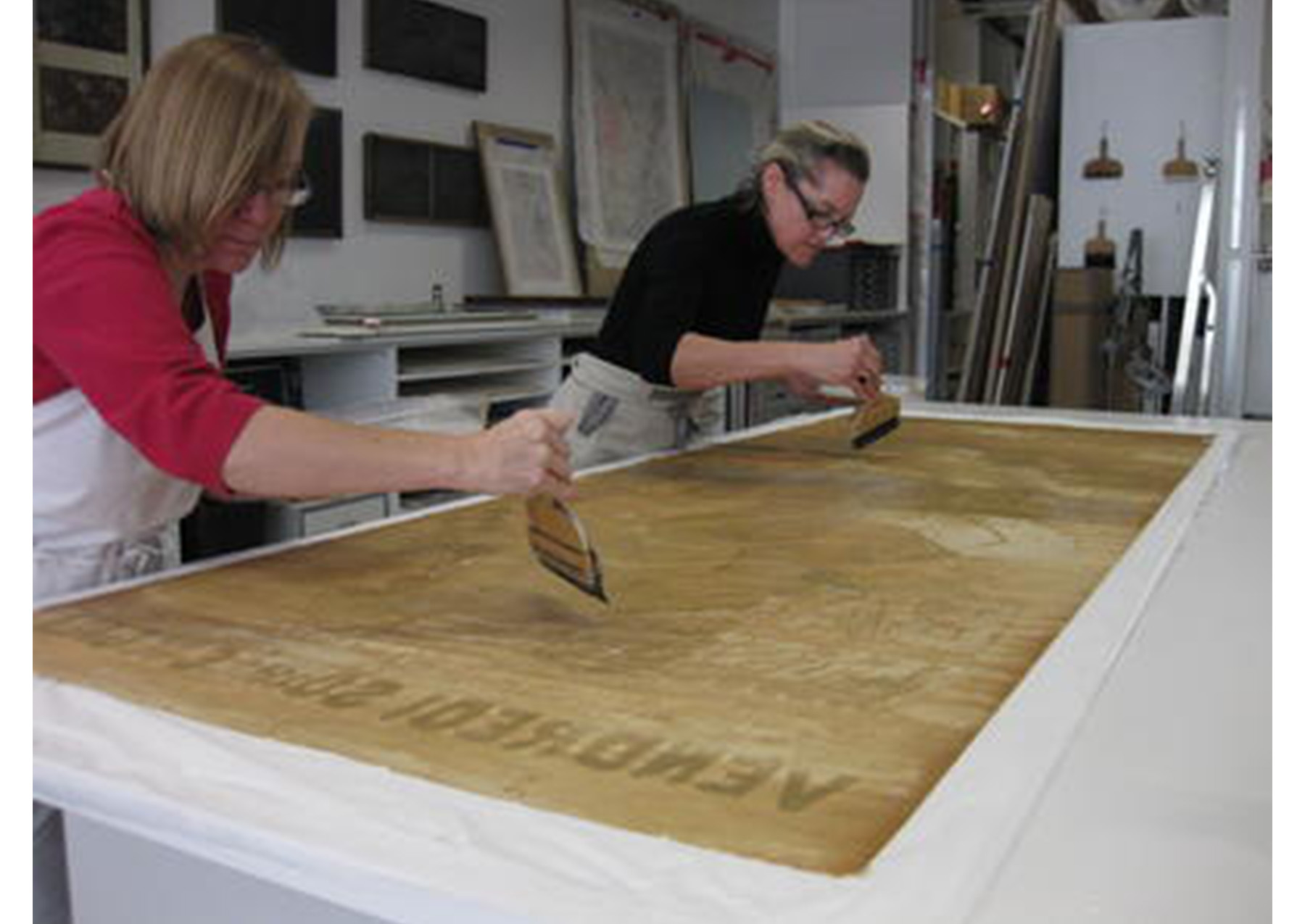
Leslie Paisley, Rebecca Johnston Applying wheat starch paste in preparation for relining
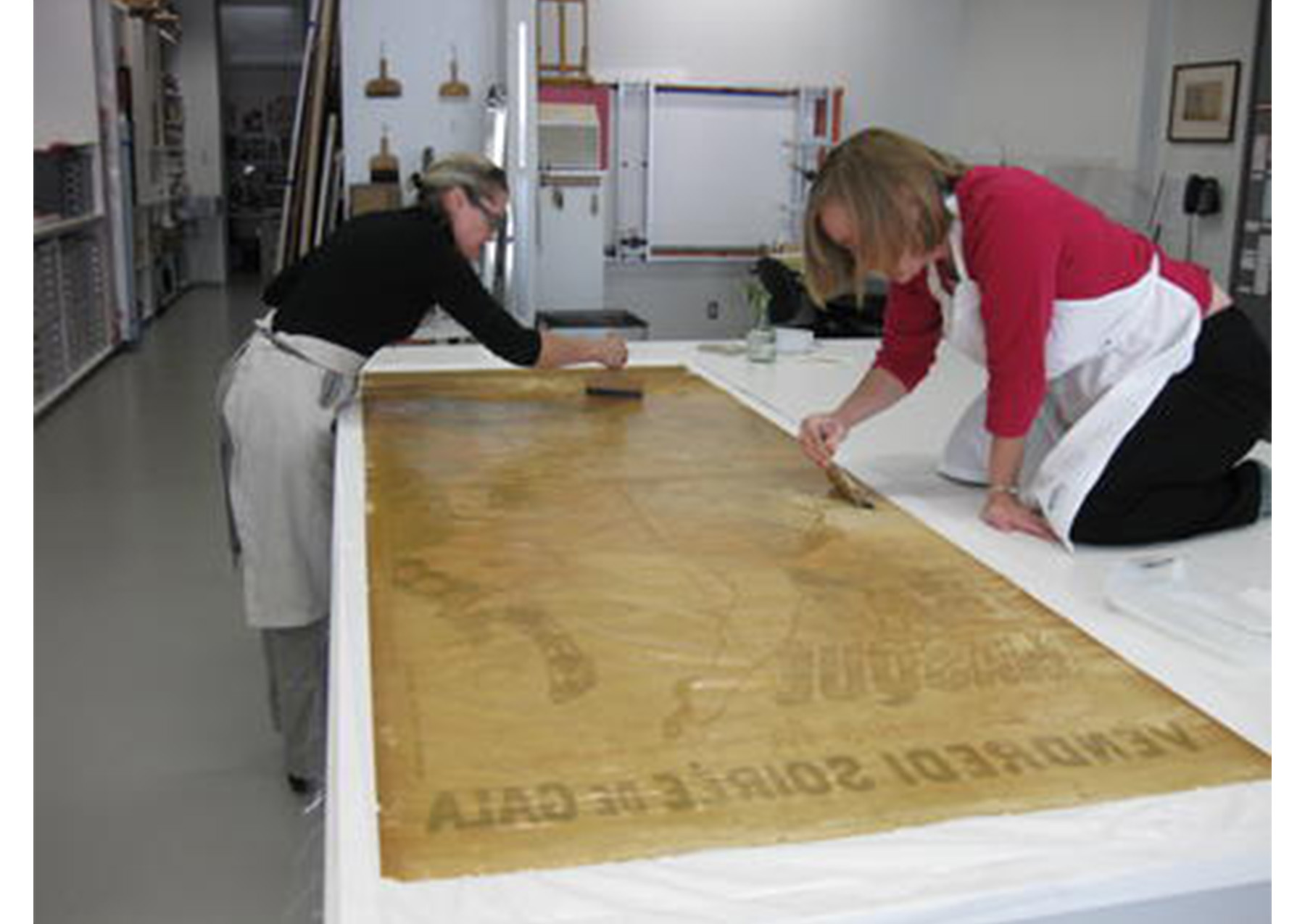
Leslie Paisley, Rebecca Johnston Smoothing wheat starch paste in preparation for relining
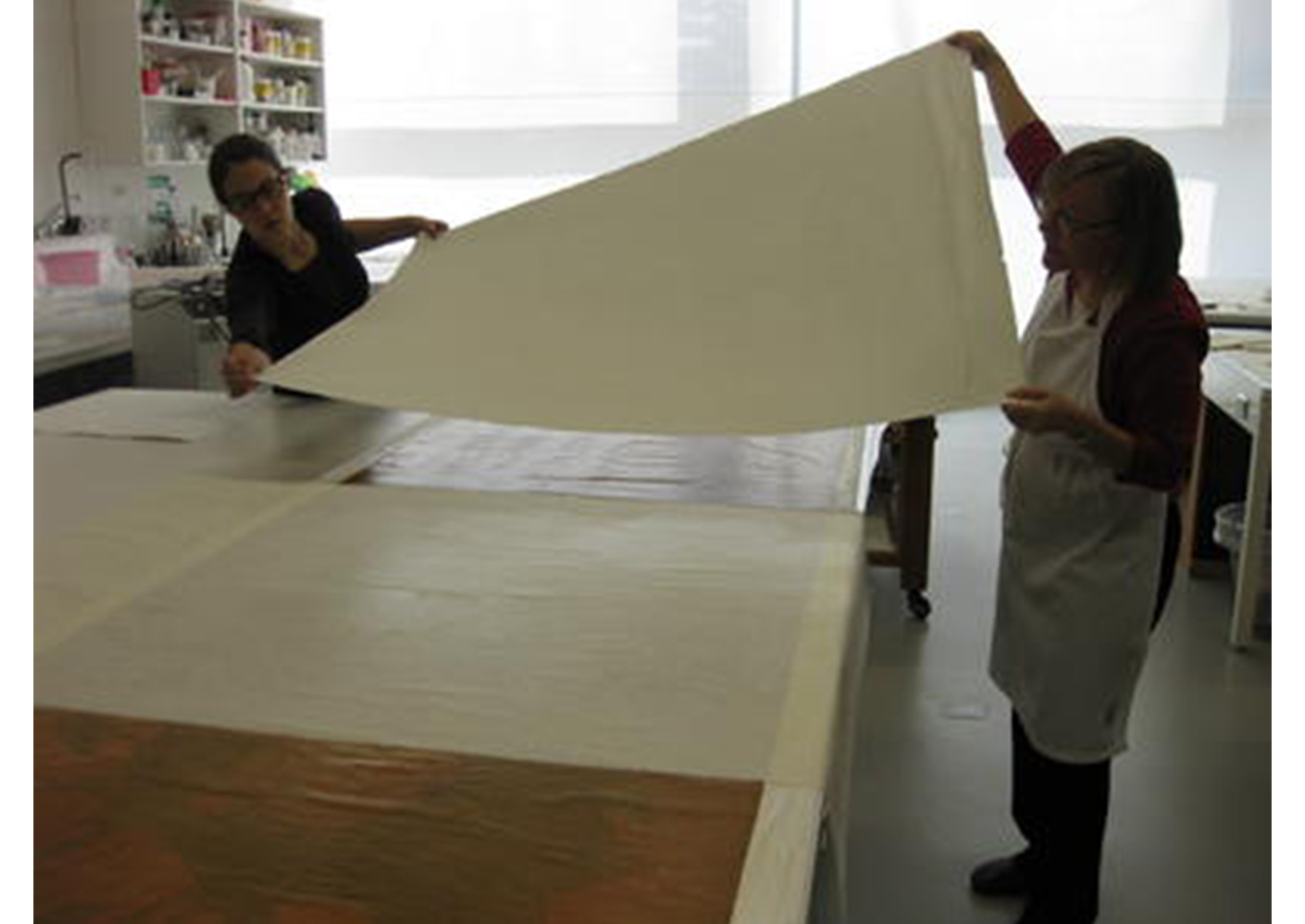
Rebecca Johnston, Jennifer McGlinchey Aligning new Japanese paper lining
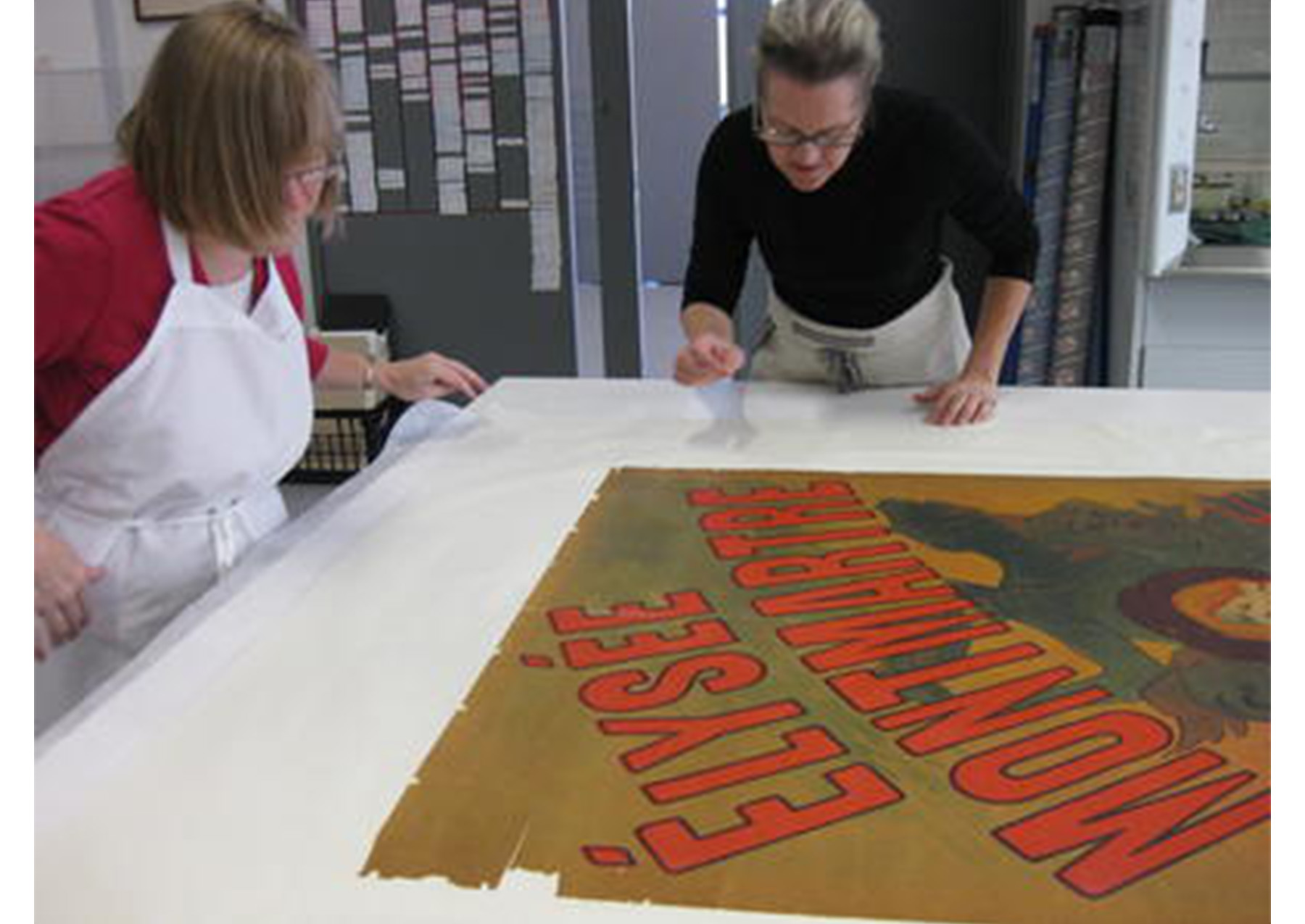
Leslie Paisley, Rebecca Johnston Checking the alignment of the edges of tears
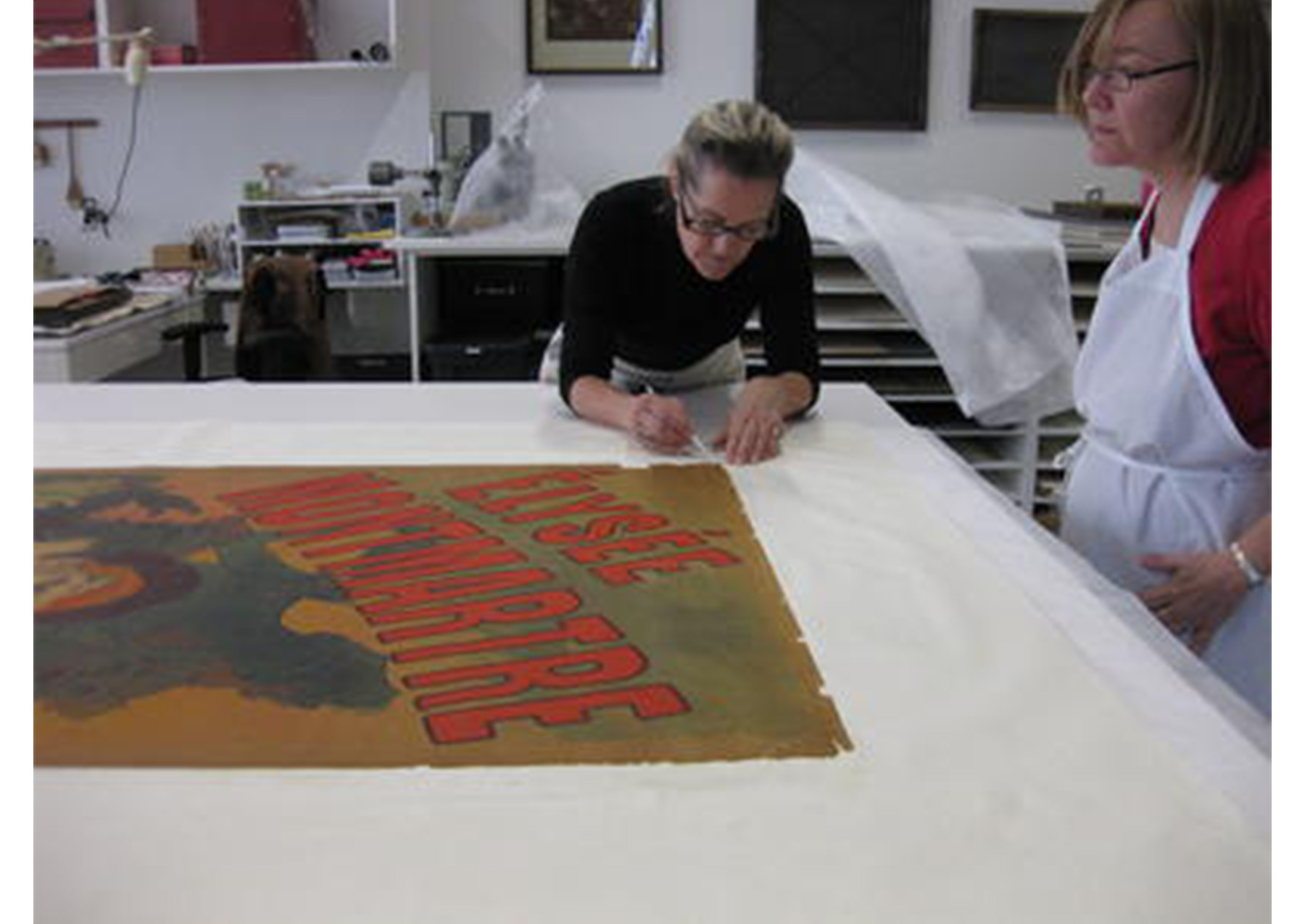
Leslie Paisley, Rebecca Johnston Replacing loose and separated edge pieces